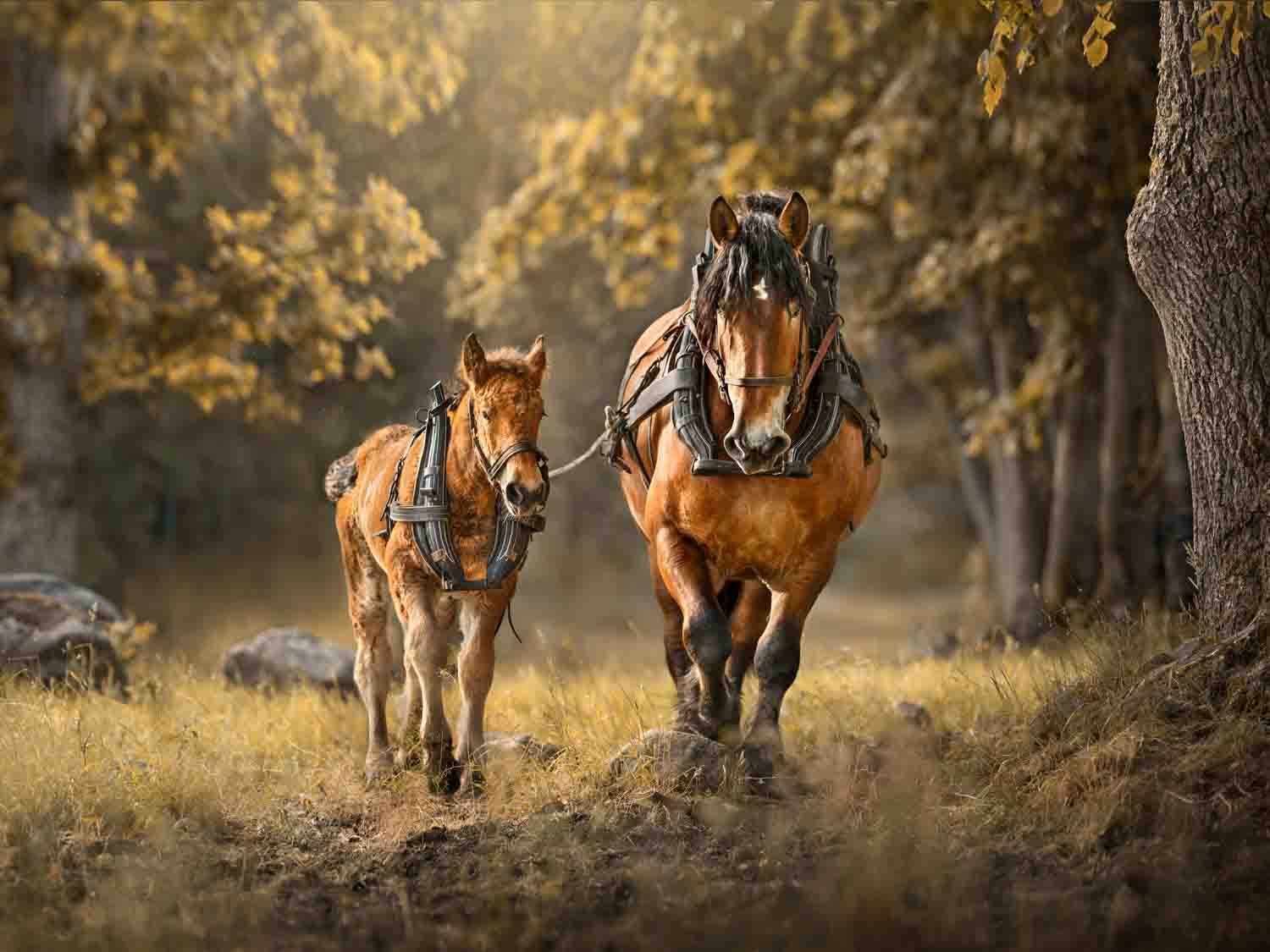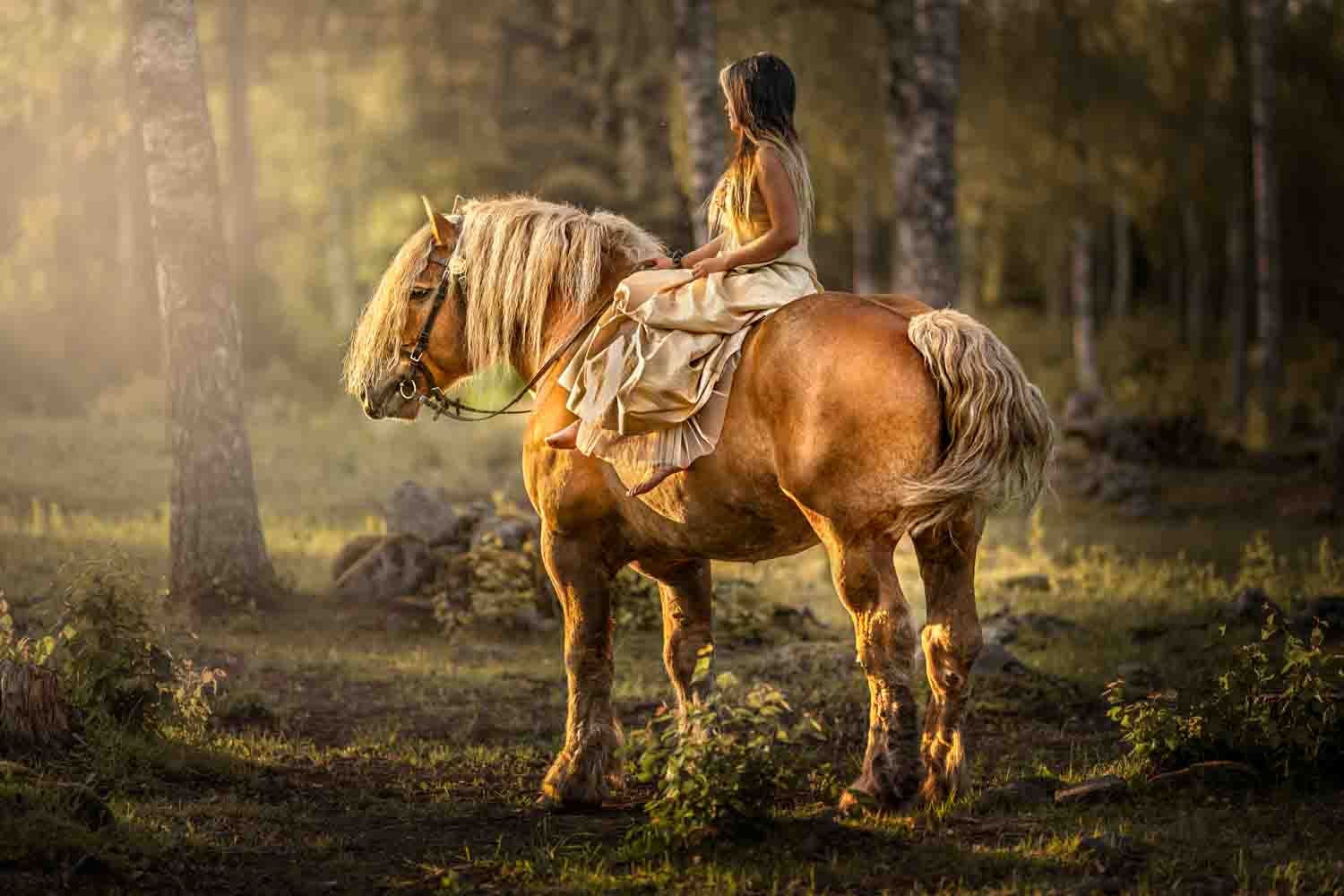6 tips for horse photography
by Maria Lindberg


"Bring Your Kid To Work"-day, a photograph that won Maria Lindberg a bronze medal at the Swedish Championship in Photography (SM i Fotografi) in 2023.
Shot with SIGMA 135mm F1.8 DG HSM | Art.
Horses are amazing animals and to be able to capture their elegance and power in a photograph is something very special. But not always that easy. I´ve been photographing horses for as long as I can remember, nowadays I photograph many clients with their horses and I hold my own workshops too.
But now, I want to give you some of my best tips for getting those great horse photos.


1. The light makes the photo
Regardless of what you´re shooting, light is crucial - and horse photography is no exception. If it is possible to decide on the time of the day for the photoshoot, you should shoot in the morning, afternoon or evening. You´ll get a softer and finer light at that time, than in you´re shooting in the middle of the day.
Many people think that a cloudy day is a bad day for photography - but it´s the opposite! When it´s cloudy, you have a nice, soft light everywhere. You avoid harsh contrasts between light and dark parts of the photograph.
I basically never shoot in direct sunlight, because that light is very harsch. It can make the horse´s fur shine nicely, and if you have the sun directly at the horse, shooting it from the side, it can work and make for a cool photo, but mostly it just results in boring shadows and completely faded parts of the photo.
So if it´s sunny outside, I always look for a shade to shoot in. So-called open shadow where the open sky illuminates the horse, without the sun shining directly on it.




2. Find a good background
When it comes to finding a nice background and setting, it´s a lot about finding a quite background without distractions. Beautiful nature often works well, or a nice brick/stone wall. Try to find something that frames the horse too - such as a tree, a branch, an opening in a stone wwll, gate or similar. Setting the horse on a path is a good trick. The road that winds away into the image behind the horse gives a deeper and more blurred background.
Try to avoid ugly electric fences, garbage cans and such when taking horse photos. Move yourself and/or the horse to find a better background. Sometime you don´t even have to change places, but just find the right angle to shoot from.


3. To photograph in the paddock
It is convenient to photograph horses in the paddock because they can be loose and they´re safe there. But the fence is often a problem. But it can work if you have a leafy or slightly larger paddock.
Try to find the place in the paddock where the fence is least visible. Make sure to stand as far from the fence as possible, or try to find an angle where it will be less prominent. Should you get a little fence in the photo, it is something that can be edited out afterwards.




4. Equipment
If you´re shooting with a system camera, it is good to have a telephoto lens that allows you to get close to the horse without having to stand too close. It is difficult to photograph a galloping horse and stand close. My favorite lens is the Sigma 135mm F1.8 DG HSM | Art. It´s my go-to lens and I absolutely love it! Razor sharp with beautiful bokeh and I love the compression it gives, and I´m still able to be within walking distance to my models. But I could also recommend the Sigma 70-200mm F2.8 | Sports.


5. Camera settings
If you shoot with a system camera, but don´t want to handle the setting manually, you should shoot in the camera´s sports mode when shooting horses. That mode is often symbolized by a running person. Horses are rarely completely still, even if they are standing in one place, and therefore it is important not to have a too long shutter speed, because then there will be motion blur. The sports mode provides a short shutter speed and freezes the movement. I, who shoot manually, always have 1/500 as the lowest shutter speed. If it´s a galloping horse, I need to go up to 1/800 or maybe even faster.
If you want a blurred background, you should also use as large aperture as possible. I often use aperture 1.8 and make sure to focus on the horse´s head. It doesn´t matter if the butt is a little out of focus, the important thing is that the head and eyes are sharp.


6. Think about the safety
It is never worth risking that the horse or a human become injured to get the photo. Safety must come first. It should be calm and safe and everyone should be comfortable with the situation.
If I´m going to photograph a rider without a helmet, I either want it to be a very good rider who knows his/her horse very well. Or I only photograph the horse standing still or in a very calm gait, and then there must be a person used to horses (who knows the horse in question preferably) who holds the horse in a halter (which I edit out later) or stands only a few meters from the horse.




Bonus tip!
Get a so-called photo halter that you can put on the horse when you take photos. It is easy to edit out and makes it possible to photograph horses that look loose in places where you can´t have them loose.


Maria Lindberg
Horse Photographer and Sigma Nordic Ambassador
Maria Lindberg is a professional photographer with focus on dreamlike fairlytaile photography in Småland, Sweden. She specializes in portraits and dreamlike fairytale photography to communicate her passion and love for the craftmanship of her work. She is also a veteran in the field of lectures and workshops to inspire and help others excel in their photographic journey.


